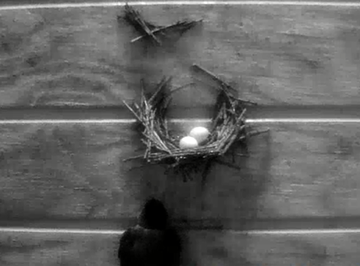 Photo ©
Tri-State Bird Rescue & Research
Photo ©
Tri-State Bird Rescue & Research
Shedding Some Light on Chimney Swifts
Birds have devised some ingenious nesting strategies to conceal and protect their offspring. Some nest in tree cavities or nest boxes, others in dense shrubbery, and some even hide in plain sight. Perhaps no other North American bird has a strategy as bizarre as that of the amazing Chimney Swift, an aerial acrobat that spends most of its life on the wing. Because of their inaccessible nesting sites, very little is known about what goes on in a Chimney Swift nest. What we do know is that both sexes help to build a nest that looks like a half-saucer made out of twigs which are glued to a vertical wall with the swifts’ own saliva. Because it is extremely difficult to monitor these nests, one of the best ways to learn about them is to install a nest camera in a known nesting chimney before the swifts arrive in the spring. Watching their nests take shape in the night vision of the camera, we see that the engineering is precise; it has to be if the eggs, usually 4–5, are to stay balanced in half the space normally allotted to other bird species. Thanks to a nest camera hosted by Saint Vincent College in Valencia, PA, you, too, can peek into the dramatic process unfolding in chimneys across the country right now.
Chimney Swifts naturally nest in hollow trees and dark caves, but when European settlers arrived and began to construct chimneys, silos, and wells, the swifts began using these sites more frequently. Today, they are most commonly found nesting in cities, even more so than in surrounding rural landscapes. You will know them by their cigar-shaped bodies and boomerang-like wings, which appear to beat asynchronously when they fly. You might even hear their high-pitched calls high above the rooftops as they catch flying insects. There are often 1 or 2 helpers at the nest in addition to the mated pair; sometimes these helpers are the pair’s offspring from previous years. Once the breeding season has ended, Chimney Swifts gather in large flocks to roost by the hundreds, sometimes thousands, in a single chimney. These large flocks will migrate to Central and South America en masse, stopping to roost in a different chimney along their route each night.
Chimney Swifts are faithful to their breeding sites and will return year after year to the same chimney. When a nesting chimney collapses or is capped, the swifts must find a new home. Some people have successfully provided an alternate home by constructing a Chimney Swift tower. These little dynamos live life on the edge and are fascinating to watch–see for yourself.
 Photo ©
Photo ©